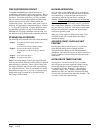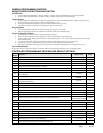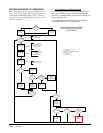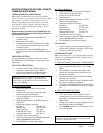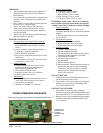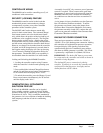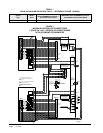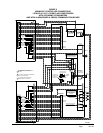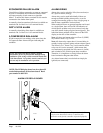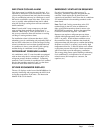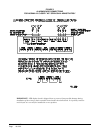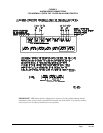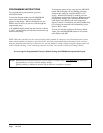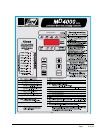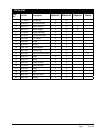
Manual 2100-574
Page 17 of 23
2ND STAGE COOLING ALARM
This alarm output is available for use if desired. It is
important to note that in some installations, due to A/C
system sizing and internal heat load, that the secondary
(lag) air conditioning unit may be called upon to assist
the lead air conditioner some of the time. If this is the
case, or possibly when additional heat load is added,
using the 2nd stage cooling alarm will cause nuisance
alarm conditions.
Note: For units with 2-stage compressors, the dual
stage cooling alarm activates on cooling Stage 3
initiation. Menu Step 23, CoPr, must be set to “2” for
this to occur, otherwise alarm will activate on cooling
call Stage 2 causing nuisance alarm.
For installations where it is known that there is 100%
redundancy (one air conditioning unit can handle 100% of
the load 100% of the time) use of the 2nd Stage Cooling
Alarm is a method to issue an alarm signal that the lead
air conditioner is down (or not delivering full capacity)
and that the lag air conditioner is now operating.
REFRIGERANT PRESSURE ALARMS
Air conditioners with “J” control module are equipped
with an alarm relay that is activated upon high or low
refrigerant pressure lockout conditions. Connecting
terminals 2 and 3 from the air conditioner 24V terminal
block to the matching terminals 2 and 3 on the alarm
board will allow these alarms to function.
SPYDER ECONOMIZER DISPLAYS
The two (2) displays on the front of the MD4000 are for
remotely monitoring and programming the 100% fresh
air Spyder economizers in the units. See Instruction
Manual 2100-576 for details.
EMERGENCY VENTILATION SEQUENCE
For units with economizers, there are two (2)
emergency ventilation sequences designed into the
controller. Both require the -B alarm board and
connection of terminals E and F from the air conditioner
24V terminal block to the matching terminals on the
alarm board.
Note: The E and F wiring connections at the 24V
terminal block in the A/C units are different for
older style EIFM economizers than for newer style
ECONWMT economizers. Refer to the appropriate
Controller Connection diagrams - See Table 1.
Sequence one requires a refrigerant pressure alarm,
coupled with high temperature alarm condition No. 1
(HAL 1 set point). If both of these conditions occur,
the economizer in the air conditioner that issued the
refrigerant alarm will drive open to ventilate the building.
Sequence two (HAL 2 set point) is activated by high
temperature alarm No. 2, and will initiate even without
a refrigerant pressure alarm signal. Both economizers
will be activated to provide emergency ventilation.
This strategy help protect against building overheating
if air conditioner(s) are inoperative for non-pressure
related reasons (bad compressor, contactor, run
capacitor, etc.).



